
The Fleet Air Arm (FAA) is the naval aviation component of the United Kingdom's Royal Navy (RN). The FAA is one of five RN fighting arms. As of 2023 it is a predominantly "rotary" force, with helicopters undertaking roles once performed by biplanes such as the Fairey Swordfish. It operates the F-35 Lightning II for maritime strike and the AW159 Wildcat and AW101 Merlin for commando and anti-submarine warfare.

The third and current HMS Argyll is a Type 23 Duke-class frigate. She is currently the oldest serving Type 23 frigate in the Royal Navy. Like all of her class she is named after a British dukedom, in this case that of Argyll. HMS Argyll was laid down in March 1987 by Yarrow Shipbuilders at Glasgow, and launched in 1989 by Lady Wendy Levene, sponsored by the Worshipful Company of Paviors. She was commissioned in May 1991. Argyll is currently based at HMNB Devonport.
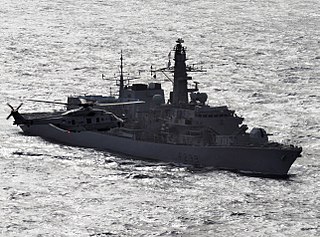
HMS Richmond is a Type 23 frigate of the Royal Navy. She was launched on 6 April 1993 by Lady Hill-Norton, wife of the late Admiral of the Fleet The Lord Hill-Norton, and was the last warship to be built by Swan Hunter Shipbuilders. She sailed from the builders on the River Tyne in November 1994. She is named for the Dukedom of Richmond.

The Westland Lynx is a British multi-purpose twin-engined military helicopter designed and built by Westland Helicopters at its factory in Yeovil. Originally intended as a utility craft for both civil and naval usage, military interest led to the development of both battlefield and naval variants. The Lynx went into operational usage in 1977 and was later adopted by the armed forces of over a dozen nations, primarily serving in the battlefield utility, anti-armour, search and rescue and anti-submarine warfare roles.
This is a list of aviation-related events from 2002.

Royal Naval Air Station Yeovilton, commonly referred to as RNAS Yeovilton, is a military airbase of the Royal Navy, sited a few miles north of Yeovil, in the English county of Somerset. It is one of two active Fleet Air Arm bases, the other being RNAS Culdrose). RNAS Yeovilton is currently home to the Royal Navy Wildcat HMA2, along with Army Air Corps Wildcat AH1 helicopters, as well as the Royal Navy's Commando Helicopter Force Merlin HCi3/4/4A and Wildcat AH1 helicopters.
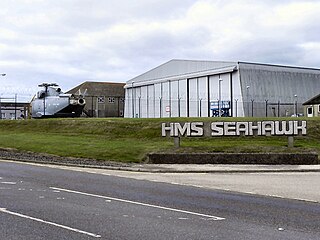
Royal Naval Air Station Culdrose is a Royal Navy airbase near Helston on the Lizard Peninsula of Cornwall UK, and is one of the largest helicopter bases in Europe. Its main role is serving the Fleet Air Arm's front line AgustaWestland Merlin helicopter squadrons.

The Wildcat Demo Team are the Royal Navy's helicopter display team. The team is composed of two AgustaWestland Wildcat HMA.2 anti-submarine and anti-shipping helicopters, with the aircraft and crews drawn from 825 Naval Air Squadron based at RNAS Yeovilton in Somerset.
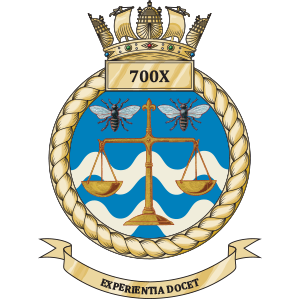
700 Naval Air Squadron is an experimental test squadron in the Royal Navy’s Fleet Air Arm.

847 Naval Air Squadron is a squadron of the Royal Navy Fleet Air Arm. It operates AgustaWestland Wildcat AH.1 helicopters and provides armed reconnaissance and light transport support to 3 Commando Brigade Royal Marines. Along with 845 and 846 naval air squadrons, it forms part of the Commando Helicopter Force. The squadron was re-formed from 3 Commando Brigade Air Squadron on 1 September 1995.

848 Naval Air Squadron was a squadron of the Royal Navy Fleet Air Arm. It operated the Westland Sea King HC.4 helicopter and previously provided advanced flying training to pilots for the other squadrons in the Commando Helicopter Force. The squadron was based at RNAS Yeovilton in Somerset and was decommissioned on 24 March 2016.

815 Naval Air Squadron is a Royal Navy Fleet Air Arm squadron flying the AgustaWestland Wildcat HMA.2 helicopter and is the Navy's front line Wildcat Naval Air Squadron. The squadron is based at RNAS Yeovilton in Somerset. The squadron is capable of carrying out multiple roles such as: counter-narcotics, anti-piracy, Above Surface Warfare (ASW), search and rescue, disaster relief and flying and engineering training. In the early 2000s, the Navy said that the squadron was largest helicopter squadron in Europe.
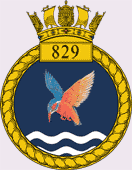
829 Naval Air Squadron was a squadron of the Royal Navy Fleet Air Arm. Before it was decommissioned in March 2018, it operated the AgustaWestland Merlin HM2 helicopter.
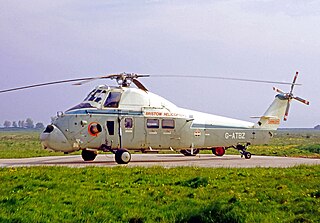
G-ASWI was a Westland Wessex 60, operated by Bristow Helicopters operating between Bacton Gas Terminal, in Norfolk, and Amoco gas platforms in the North Sea. On 13 August 1981 the helicopter lost power to the main rotor gearbox, going out of control during the ensuing autorotation. The flight was carrying 11 gas workers from the Leman gas field to Bacton. All people on board were lost.

The AgustaWestland AW159 Wildcat is a British-developed military helicopter, now marketed by the Italian company Leonardo. It is an improved version of the Westland Super Lynx designed to serve in the battlefield utility, search and rescue and anti-surface warfare roles. In British service, common variants are being operated by both the Royal Navy and British Army, having replaced their Lynx Mk.7/8/9 predecessors. The AW159 has also been offered to several export customers, and has been ordered by the Republic of Korea Navy and the Philippine Navy.

On 13 March 2014, an AgustaWestland AW139 helicopter of Haughey Air crashed shortly after taking off at night in fog from Gillingham, Norfolk, United Kingdom, killing all four people on board. Among the victims was Edward Haughey, Baron Ballyedmond.

Rear Admiral Iain Robert Henderson, is a retired senior Royal Navy officer.
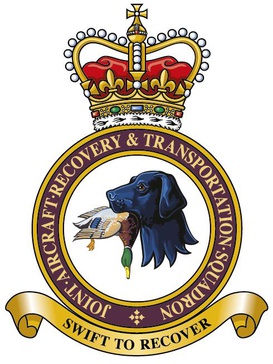
The Joint Aircraft Recovery and Transportation Squadron (JARTS), informally known as Crash and Smash, is a combined Royal Navy and Royal Air Force squadron that is tasked with the recovery and surface transportation of aircraft under the aegis of the British military framework. The squadron operates worldwide, and recovering aircraft from post-crash incidents is a large part of their work. Whilst they are a component of the British military, they may be asked to attend and recover aircraft from non-military incidents as they have a Memorandum of Understanding with the UK's Air Accident Investigation Branch (AAIB).


















